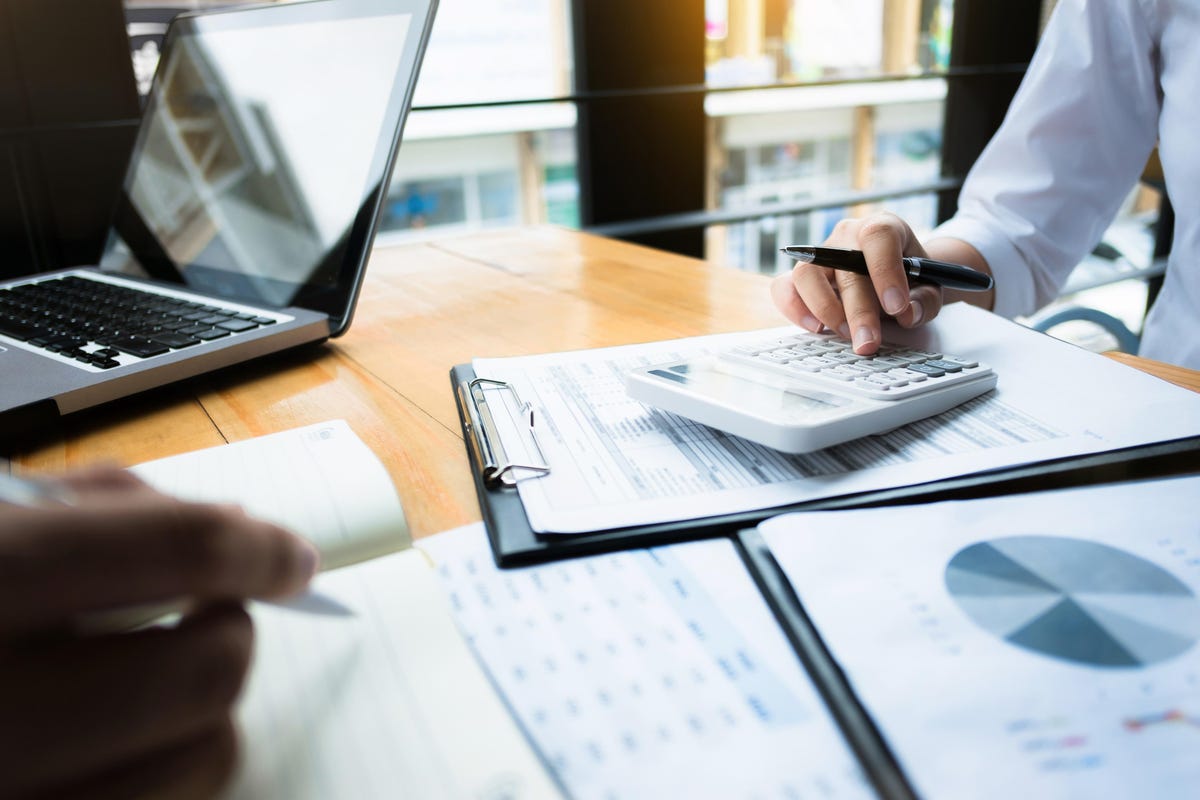
getty
Inflation is the rate at which prices for goods and services rise in an economy. It refers to the decline of purchasing power of a given currency. So, over time, the dollar, for example, holds less value.
Economists generally agree that inflation is neither inherently good nor bad. Often, it’s a sign of economic recovery. At the moment, for example, it’s largely driven by the unprecedented COVID-19 pandemic—an amalgamation of low interest rates set by the Federal Reserve, direct government stimulus to both consumers and businesses alike, and pent-up demand for specific goods and services as the world reopens and resumes some semblance of normalcy.
The combination of all these factors has resulted in demand outpacing supply. Hence: Shortages and substantial price upticks, particularly in semiconductor chips, housing, used cars, and other key categories.
Many central banks try to keep inflation around two to four percent each year. During periods of high inflation, some governments will set prices and pay subsidies to producers. But most central banks rely on managing expectations in order to manage longer-term inflation.
More specifically, in the United States, the Federal Reserve has instituted policies to temporarily reduce economic activity. During the 2008 and 2020 economic crises, the Fed initiated quantitative easing with bond-buying programs to support deflationary environments.
MORE FOR YOU
Just last week, the Federal Reserve announced that it’d begin reducing its pandemic-era asset purchasing program this month—a decision it’s been entertaining for quite some time, but one that it’s yet to see to fruition. The plan is to start tapering the monthly bond purchases of $120 billion by $15 billion this month, and then pick up the pace next month to culminate by June. To little surprise, news of this decision has moved the markets.
With or without help from the government, however, inflation can take a toll on consumers and investors alike.
How does inflation affect you personally?
Here are three reasons you should care about inflation.
1. Consumer goods and services get more expensive.
Inflation occurs across all sectors—from housing and food to medical care, transportation and recreation. But the inflation we’re discussing here happens when it affects goods and services across all industries. The kind of inflation that has consumers and investors alike worried about the erosion of their purchasing power.
Inflation affects the price of products you use and the services you leverage on a day-to-day basis.
It’s important to note that supply and demand can cause prices to rise, but this is not synonymous with economy-wide inflation. That’s just your normal ebb and flow.
2. Your wage may not rise with the rising cost of living.
Typically, you can classify inflation into three types:
- Demand-pull: This occurs when an uptick in the money or credit supply stimulates the demand for goods or services at a faster rate than they can be produced.
- Cost-push: This happens when companies charge more for goods because of rising production costs. Rather than absorbing costs like higher wages or materials/facilities, they push the difference onto their customers.
- Built-in: This is a product of consumers’ expectations. Because people expect inflation rates to continue to rise, workers demand higher wages to maintain their standard of living. This sends prices higher in a “wage-price spiral.”
During cost-push or built-in inflation, consumers wallets’ take a hit.\
You may not be able to keep up with the rising cost of living or sustain your lifestyle with prices that keep creeping up. Especially not if you’re still making the same amount of money.
3. If you’re invested, inflation can impact your portfolio.
Because inflation affects the value of the dollar, inflation can cause the value of your investment account to sink. The less value your dollar has, the less overall value your portfolio has over time.
Fortunately, you can hedge against inflation. Investing in alternative assets like gold, precious metals and other commodities provides you with diversification benefits. These types of securities do not always correlate with the other assets in your portfolio.
Of course, you can also choose to invest your funds in financial instruments that are strategically built to consider inflation. Treasury Inflation-Protected Securities (TIPS), for example, are low-risk and repay your principal in full after adjusting for inflation. Some mutual funds and ETFs also specialize in TIPS to help diversify and protect your portfolio.
Q.ai, your go-to investing platform, offers you AI-managed downside protection as a way to help protect portfolio returns from sharp market volatility. While downside protection may limit the impact of negative moves in the market, it may also reduce potential gains.
The app does this through advanced AI deep learning methodologies that use pattern recognition to calculate whether a stock may experience a negative weekly return. The hedge strategy focuses on the SPDR S&P 500 ETF (SPY), as the ETF is a good proxy for the general sentiment of the S&P 500. For example, if AI determines that the SDPR S&P 500 ETF (SPY) may go down for the upcoming week, Q.ai automatically applies downside protection as a way to reduce significant losses in the event of a stock market sell-off.
You never have to lift a finger. Learn more about Q.ai and what it can offer you.
Liked what you read? Sign up for our free Forbes AI Investor Newsletter here to get AI driven investing ideas weekly. For a limited time, subscribers can join an exclusive slack group to get these ideas before markets open.




